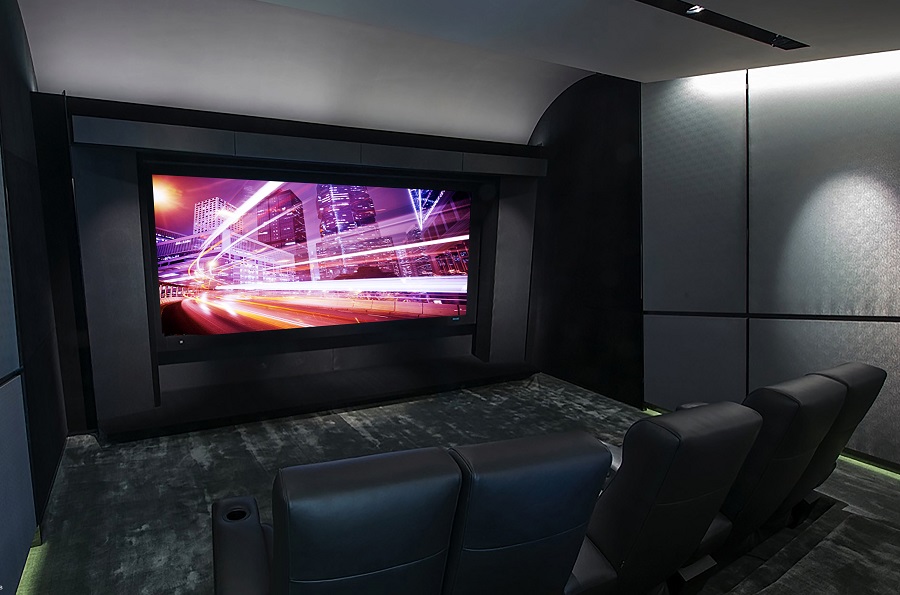
How Can You Get the Best Video Quality in Your Home Theater?
The Right Products and Design Can Make All the Difference
Don’t know the difference between 4K, OLED, and HDR? You’re not alone. With video technology continually evolving, it can be difficult to keep up. When it comes to home theater design, finding the right products and creating the ideal environment for them to thrive can be the most difficult part. In this blog, we’ll highlight some of the key points when it comes to getting dynamic, larger-than-life images in your Baltimore, MD home.
SEE MORE: 7 Creative Ideas to Finish Your Home Theater Design
Invest in the Latest Video Technology
Whether you’re going with a flat screen or projector for your home theater design, there are a few video terms that you should know before you get started. Some of these apply to both projectors and TVs, while OLED is a term that is used exclusively for the latter.
- 4K Ultra HD: For the past few years, 4K Ultra HD has continued to grow in the residential market. While traditional high definition offers 1080 pixels across the screen, 4K Ultra HD boosts that up to 3840 pixels. You get much greater detail, and you can sit closer without any pixelation or blurry images.
- OLED: OLED is the evolution of LED screens which use LED lights to light up crystals on the display to create different colors. With OLED, the LED lights themselves make up the image on the screen. This results in brighter colors and darker blacks for better contrast and quality.
- HDR: Applicable to both projectors and televisions, HDR is another video technology that improves the colors on your display. It digitally enhances the contrast between the brightest white and darkest black, allowing for thousands of colors to appear on the screen.
- 8K: Most movies are now recorded in 8K resolution (meaning 7,680 pixels across the screen). There aren’t any 8K televisions currently on the market, but there’s no doubt that the media industry is headed that way. First, the industry has to work out the HDMI requirements to transfer these large signals before embracing residential use.
Create the Ideal Movie-Watching Environment
Once you’ve found the perfect projector or television for your theater based on these specifications, it’s time to give it the right environment to thrive. This is especially important if your home theater design will include a projector instead of a flat screen.
- Dedicated Screens: You should pair up your 4K projector with a dedicated home theater screen. These screens are designed to reject ambient lighting and absorb only light coming directly at them, so the Ultra HD signal comes through as cleanly as possible.
- Motorized Shades: Whether you’re using a TV or projector, you want to limit the ambient lighting in the room. We recommend installing your theater in a room without windows. If that’s not possible, install motorized shades that drop down as soon as the movie begins.
- Avoid Reflective Surfaces: When you’re putting the finishing touches for your theater, make sure that you do not add any furniture or decorations with reflective surfaces. Any ambient lighting or even light coming from your projector may bounce off them and become a distraction, taking away from your viewing experience.
If you want to stay up to date with the latest in AV and smart home technology, subscribe to a monthly learning journal with the Bravas dealer nearest you.